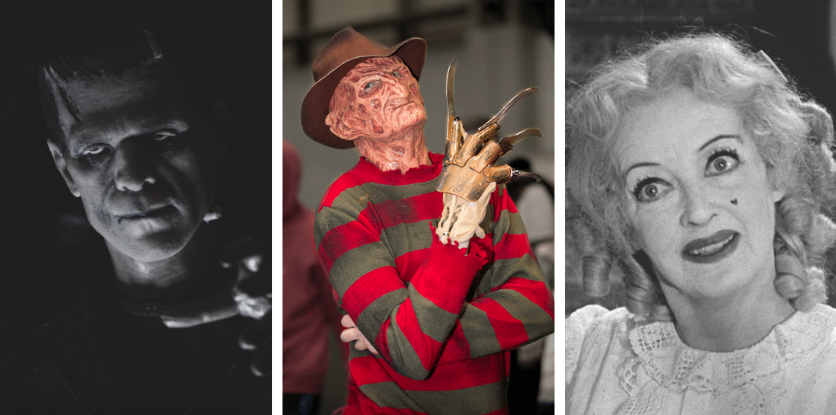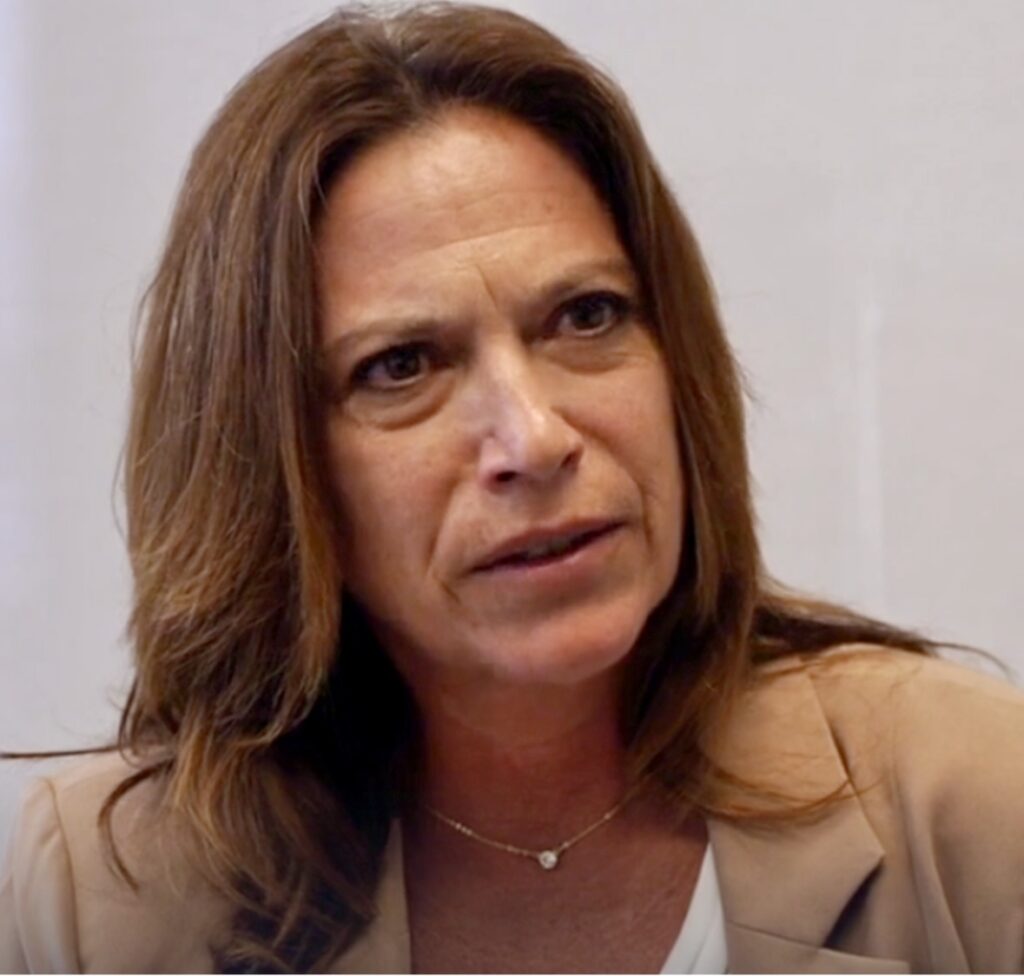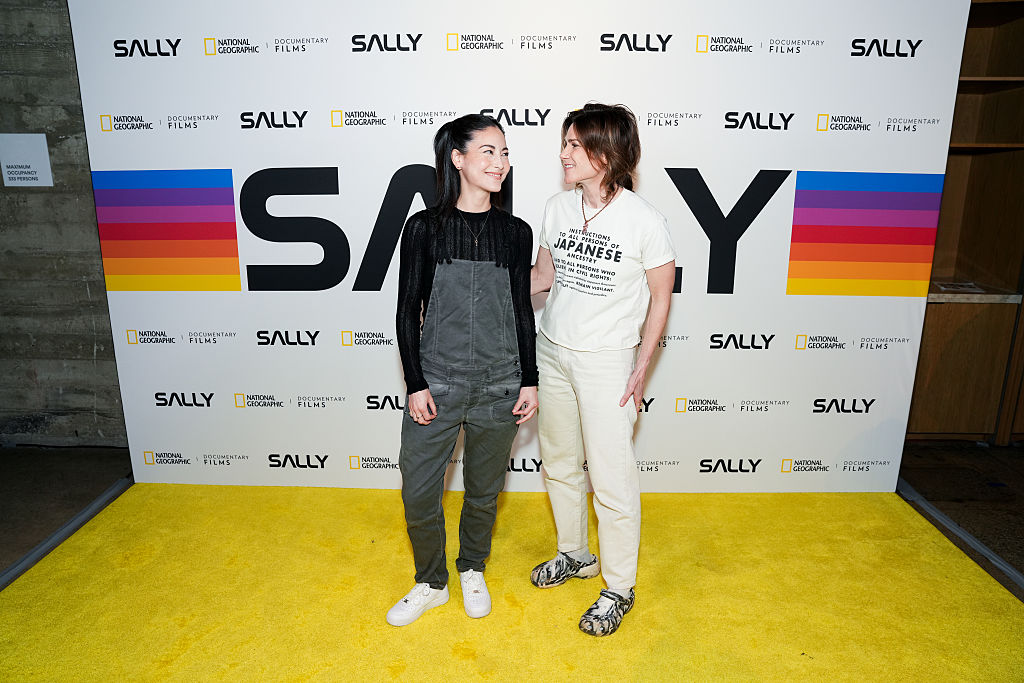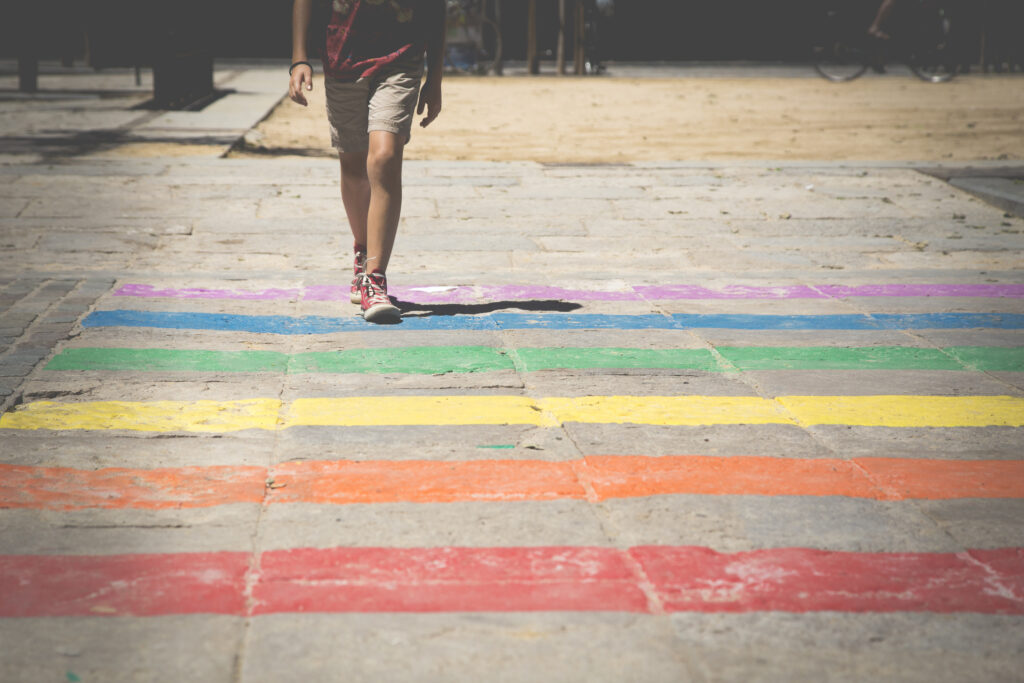Here’s Why Your Favorite Horror Films Are Actually Gay

What do monsters represent for us versus a straight audience?
While there’s a community of queer folks passionately arguing about which pop queen reigns supreme (it’s Britney and Robyn and I will die on these hills), there’s an equally enthusiastic one debating about the best horror films. Many queer people seem to love horror in a way that goes deeper than the more obvious connections between the campiness, resourcefulness, and resilience of both this genre and our community.
Ultimately, the queer love of horror comes down to the ways in which the genre interacts with both body and mind. According to film scholar Linda Williams, horror is one of three ‘body genres’ – along with melodrama and porn – which all cause a physiological reaction with the viewer. You scream, cry, or come, often along with the characters on screen. And guess what? The gays love those other genres, too.
My experience of being closeted was one of being totally disembodied. My head and heart told me one thing, please stop, this doesn’t feel right and I can’t tell you why but trust me, while my body did something else, like have blacked-out sex with a dude or cos-play as a straight woman by wearing painful heels and big hoops.
So, for me, coming out actually meant coming into my body. Coming out allowed me to experience new, overwhelming physical sensations, which weren’t available while I was closeted. This is the case for lots of queer people. After being so deprived, disassociated, and in our heads while closeted, a sense of presence, embodiment, and catharsis all feel like a welcome compulsion. Horror films also offer a sense of embodiment and catharsis. The best way to enjoy them is to be present – in your body, not in your head – and just go along for the wild ride with the reassurance that you’ll survive. It’s no wonder that for many queer folks, horror actually feels safe.
So, horror can offer a welcome physical release for queer people, but what about the emotional aspect? This is where things get more complicated. Generally speaking, horror film theory argues that the “monster” is representative of a threat in society. You can pretty accurately track the history of the U.S. just by looking at its horror films, which capture what terrified us at the time: the Russians (1950s), ourselves (1970s), and technology (2000s).
It’s not exactly surprising then that many times, the monster itself has been coded as queer because heteronormative society has been terrified of us throughout history. In Powers of Horror, Julia Kristeva argues that the monster is often “abject:” it’s neither subject nor object, but rather occupies a third space where “meaning collapses.” It’s uncanny in the Freudian sense in that it is both familiar and unfamiliar. Think about a corpse: Is it terrifying because you see a dead body and recognize it as something that was once alive or is it scary because of the unfamiliarity of its rotting and decay?
Abject has negative connotations since it typically describes something low or debased and certainly, this perspective has long been applied to queerness. It’s one of a number of reasons why queer viewers are often more aligned with the monster than not, regardless of how it’s coded. While that doesn’t always feel so good, in horror films, the abject also has a whole lot of power thanks to its very transgression. There’s the raw power of the monster, who violently destroys, consumes, slashes, and bursts through the avatars of heterosexuality on screen i.e. the protagonists or subjects, who are now victims or objects. For a community that’s often been unwillingly rendered as victims or objects, it’s pretty significant to see ourselves as these super strong, resilient agents of power on-screen.
Ultimately, queer viewers occupy an ambiguous position when it comes to horror. We might be forced to align with the monster but at the same time, we – as the audience – are meant to be connected to the protagonist. The OG queen of looking in film theory, Laura Mulvey, argues that the person assumed to be in the audience — for pretty much all of film history — is the straight white man.
He watches Harrison Ford do some man thing and he’s like “ah, now I feel like a super action hero and I’m so handsome. Good for me.” The line between director, actor and straight white male viewer is typically a very direct one, even when the protagonist is a woman because she often possesses “masculine” and androgynous qualities. This is especially true in horror, where the “final girl” trope (coined by Carol J. Clover) has become the norm.
But what about everyone else who’s looking at the film: women, BIPOC, queer people, all of the above? We’ve got to mentally juggle to suture ourselves into that straight white male director/actor/audience perspective. Certainly, we have the tools to do so, but the scary thing that’s going after Kurt Russell – his mother! Communists! Whatever! – may not be the same for women, BIPOC, queer people, or all of the above.
So, if a queer viewer identifies both with the monster and protagonist, how does that change the fear that’s being embodied in horror films? What do these monsters represent for us versus a straight audience? Let’s take a look at some classic horror films to see what they’re really about, presuming that the audience is really (or even just a little) gay:
WHATEVER HAPPENED TO BABY JANE: Jane was a child star in the vaudeville era, who didn’t adapt so well to the rise of film and lost her fame and fortune. Her shy sister Blanche did adapt to it and became a Hollywood star until suffering a mysterious car accident that left her paralyzed. Now, in their middle age, Jane is stuck caring for Blanche and by “caring” I mean “psychologically tormenting” her and trying to recapture the glory of her long-gone fame.
The hetero reading of the villain of Jane is she embodies the horror of being an aging woman in a youth-obsessed society. But for queer folks, the monster here is toxic family dynamics and specifically, the skewed images that our families can have of us. Jane is really Adult Jane but she continues to see herself as Baby Jane and also sees Blanche through that lens too. She’s unable – or refuses — to see her sister or herself as they are now. So, for queer audiences, the movie is about what happens when you insist on seeing yourself through an old lens, which was made in a world that no longer exists. It’s like coming out but not updating your life or vision of yourself at all, which can lead to horror or a monstrous embodiment of a skewed or absent self-knowledge in the form of adult Jane wearing the creepy make-up of her child self.
FRANKENSTEIN: Victor Frankenstein plays god and creates a creature using parts of dead bodies, which he brings to life. The creature winds up being driven to kill people after others – including Frankenstein, its “daddy” – deem it to be a monster and reject it. The monster is very much coded as queer, as it can be seen to represent a trans figure, and for hetero audiences, the fear here could be seen as that of trans folks. Its body is shaped and transformed through science and technology and its identity is one that transcends the heteronormative binary and ideas of masculinity and femininity (check out Susan Stryker’s essay for more on this).
Objectively, the monster of “Frankenstein” is trans AF. But what the monster represents for queer audiences is a bit different: this is a being who was non consensually put together by a super hubristic straight male scientist. And now that it’s alive and just trying to figure out who it is, everyone else – especially its creator — is like how dare you exist. The real horror of Frankenstein is what happens when people give you the wrong name – everyone calls the creature a “monster,” even though that’s not what it is and really, it just wants connection to itself and others. But because of this name it’s been given, no one can see what it really is. The queer fear here is what happens when we aren’t allowed connection or self-understanding. Instead we’re left with the horror of others’ ideas of ourselves imposed onto us and some annoying straight dude chasing us halfway across the world, when we’re just trying to live and find some peace and maybe a hot partner, okay?
EYES WITHOUT A FACE: A plastic surgeon disfigures his daughter in a car accident and driven by guilt and/or control issues and/or a god complex, he determines to fix this problem he caused. So, he kills other women and slices off their faces and then makes his daughter wear their literal faces over her own. Naturally. The straight reading of this movie is a father’s desire to control his daughter and keep her as a child a.k.a. it’s about the fear of female sexuality. For queer folks though, what bigger metaphor could there be for secretly gay people acting straight by hiding their “disfigured” faces with the faces of other more socially acceptable folks? And doing so with the help (and insistence) of the heteronormative patriarchy?
The queer horror here is both the fear of being masked – and the cost of it – as well as the fear of being unmasked and being seen for your true “horrifying” self. One could also say that the real horror of this movie actually is the loneliness that comes from wearing masks at all. Christiane is locked away in her house, unable to interact with the outside world until her father deems that she passes as beautiful and acceptable enough for society. So, she’s left alone with her real face that’s sometimes covered by masks that don’t quite fit right. That’s some real queer horror if there ever was some.
THE THING: A group of dudes are stuck in a research station in Antarctica when a shape-shifting alien starts infecting them. Pretty soon, no one knows who’s human and who’s an alien, so the group starts tearing itself apart – figuratively and very literally. Many see this movie as a fear of toxic masculinity: What happens when paranoia sets in with an isolated group of straight men? A whole lot of accusations and even more flame-throwers. But for queer folks, it’s worth noting that this John Carpenter classic came out in 1982. Okay, so that early ‘80s release – plus the fact that it’s a remake of a 1950s film – makes it somewhat revisionist to say that this movie is about a fear of AIDS but also, in my opinion, it 100% is.
Consider this: the “thing” can take the form of any of these men, it gets passed to someone through close contact, and the way you find out who has it is by doing a blood test. “The Thing” features some of the most gruesome body horror ever and it’s hard not to see it without the lens of the AIDS epidemic, which transformed young, healthy men’s bodies into completely unrecognizable entities. The fear of AIDS hits differently for queer and straight audiences, since for the latter, there was a very real gay panic in the ‘80s that anyone could be gay, hiding in plain sight, just waiting to give people the virus. For queer folks, “The Thing” represents both the fear of what AIDS did to the body, as well as how it ostracized people from communities. The men in this movie turn against each other, forgetting who their friends are real fast, and then Kurt Russell – the straight man with a flame-thrower – goes around methodically killing everyone who’s been infected.
THE DESCENT: A group of gal pals (gay) go spelunking (so gay) because that’s how they bond (because they’re gay) and decide to explore some uncharted territory a.k.a. a secret unmapped cave that is filled with scary creatures, plus hallucinations and visions of their past. A straight reading of this movie is that it represents the ways that grief and guilt haunt us, as the whole spelunking trip is taken to help Sarah deal with the loss of her child and husband, who died in a car accident that she survived.
But for queer viewers, this movie can be seen as about a horrifying descent into repression. Each character is haunted by things they’ve done and the deeper they get into the cave, the deeper they get into themselves and the more likely they are to meet a horrible death. The monsters in this movie are subterranean genderless creatures, which are – excuse me while I put on my psych 101 glasses – the subconscious.
So, “The Descent” is about descending deeper into the shadows of yourself and subconscious, where you find all the terrifying things you’ve hidden around queerness or shame or trauma or whatever else. And you thought you had erased or dealt with it but it’s all there, festering, becoming this feral creature that consumes and destroys you. Lots of queer folks learn to compartmentalize as a necessary survival tool and “The Descent” looks at what horrible things can happen if we just stay compartmentalized, keeping all of these separate parts of ourselves in the little cave chambers of our psyches. In Jungian terms, “The Descent” is about the fear of an unintegrated shadow and for many queer folks dealing with repression and shame, that’s a very real anxiety.
NIGHTMARE ON ELM STREET: Nancy Thompson and her friends start having nightmares about Freddy Krueger, a terrifying figure with a burned face, a glove of knives, and a gay fedora, who soon breaches the boundaries between nightmare and reality to kill Nancy’s friends one by one in their dreams. Typical readings of “A Nightmare on Elm Street” look at the horror of the collapse between the dream state and reality – or the subconscious and conscious – where the rules that we believe to be in place and the truths that we think are unshakable all fall apart under Freddy Kruger’s knife glove. There’s also the interpretation of the movie as representing how women are silenced and dismissed, and how men gaslight and terrorize women.
For queer folks, perhaps the real fear in “A Nightmare on Elm Street” is that of staying invisible. Looking at both the monster of Freddy Krueger and the protagonist of Nancy, they do share the same desire that’s expressed in different ways: they both want to be seen and the movie shows what terrible things can happen when people are forced to be invisible. Nancy spends the entire movie trying to get people (read: men) to believe her and at one point, she’s literally banging on her window and screaming at the cops – including her father – to come help her but no one acknowledges her. It’s as if they don’t see her at all and she’s left to deal with these horrors on her own. The fact is, Nancy isn’t just naming Freddy Krueger or what’s happening – she’s revealing herself to people by telling them about her dreams and subconscious. It’s this intimate, vulnerable part of her that people ignore and pretend doesn’t exist and that’s a horror that a whole lot of queer people can relate to.
If we look at Freddy through the same lens of visibility, we can see what terrible things can happen when someone is forced into the realm of invisibility for too long. Freddy wants to be seen and acknowledged and represents an extreme form of the horrors of invisibility. As a pedophile and serial killer, he certainly represents someone that’s unseen by society. The townspeople don’t want to see him – because he’s in their town, so he’s a part of them and what parts of him are in them? — so they burn him alive and then never speak his name until he starts appearing in Nancy’s dreams. He’s the ultimate nightmare representation of what can happen when people are rendered invisible by others.
What horror films do you read as queer? Let us know in the comments! Happy Halloween!












